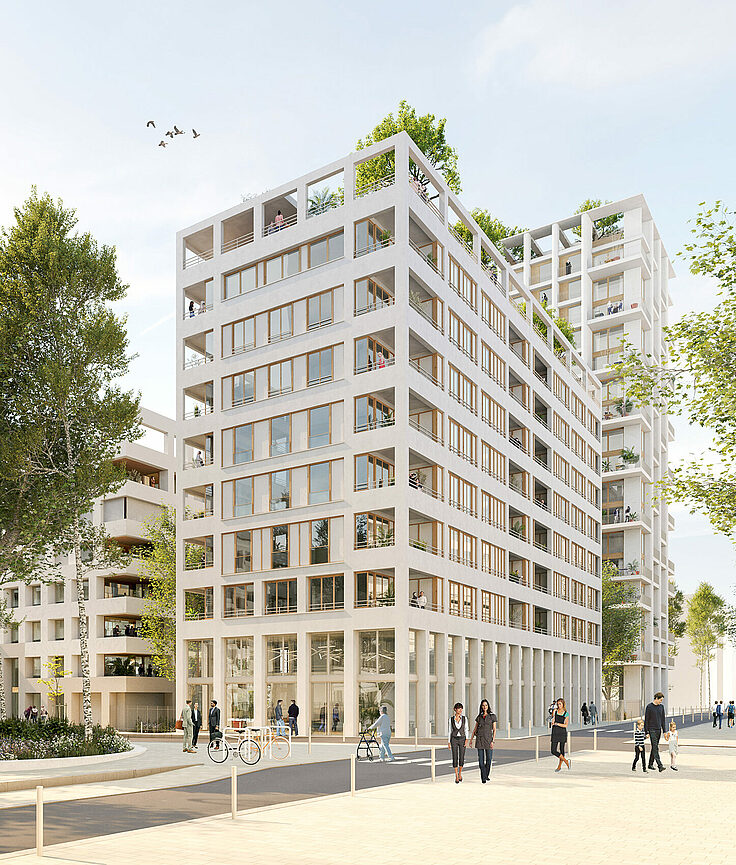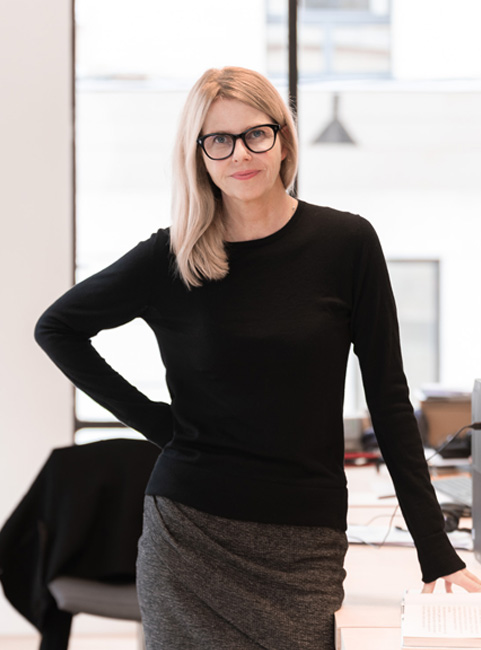More content
Mixed use

The brief was for a two-phase, mixed residential development with school provision on the River Rhône in Lyon’s Confluence district. Environmental quality and resource and energy efficiency were all high on the agenda.


“It is our firm belief that the environment must stand at the heart of urban design if we are to ensure the development of towns and cities that offer both high-quality and sustainability.”
Anne Speicher
Phase I comprises five apartment blocks with ground-floor infrastructure and a school building and provides a range of typologies on a leasehold basis. The new development is characterised in design terms by the well-defined frontage on the banks of the Rhone and the intimate, extensively landscaped courtyards within the complex itself. Its residential towers, visible from afar, offer a striking landmark.
A first for France: an apartment block built on the method 22·26
The decision to build one of the residential blocks on the method 22·26 has attracted great public attention. Its prototype, the 2226 Haus in Lustenau, Austria, ensures optimum comfort without heating, ventilation or cooling and is seen as an exemplar of resource-efficient architecture. The 22·26 building is particularly innovative in that it adapts and develops the method 22·26 to both the specific demands of homebuilding and French building regulations.
Insights
Bioclimatic construction methods based on the method 22·26 mean that interior temperature and air quality can be regulated without air conditioning all year round using the heating system as a back-up only.
With 60cm-thick hollow-block external walls and triple-glazed windows to less than 28% of the facade, the 22·26 building has excellent insulation and thermal storage characteristics. Thanks to automatic ventilation flaps, which can also be controlled individually, the 22·26 ventilation system provides natural aeration and prevents the building from cooling. Radiators – mandatory in France – serve as a backup system but should be needed for no more than a few hours a year. Comprehensive simulations of the five apartment blocks show that the 22·26 building with an energy consumption of 2 kWh/m2 p.a. easily outperforms the rest, notably in terms of ventilation and heating values.
The school is a timber construction with no air conditioning but with natural ventilation; its flexible layout allows future conversion to office space, for example.
Sustainable materials and richly landscaped courtyards
Choice of materials also plays a key role in environmental quality: fair-faced concrete is paired with bio- and geo-based materials such as solid timber and lime render, some locally sourced.
The richly landscaped interior courtyards, most open to the elements, bring freshness and diversity into the mix. Highlights include a residents’ garden and a tree-lined playground for the school.
